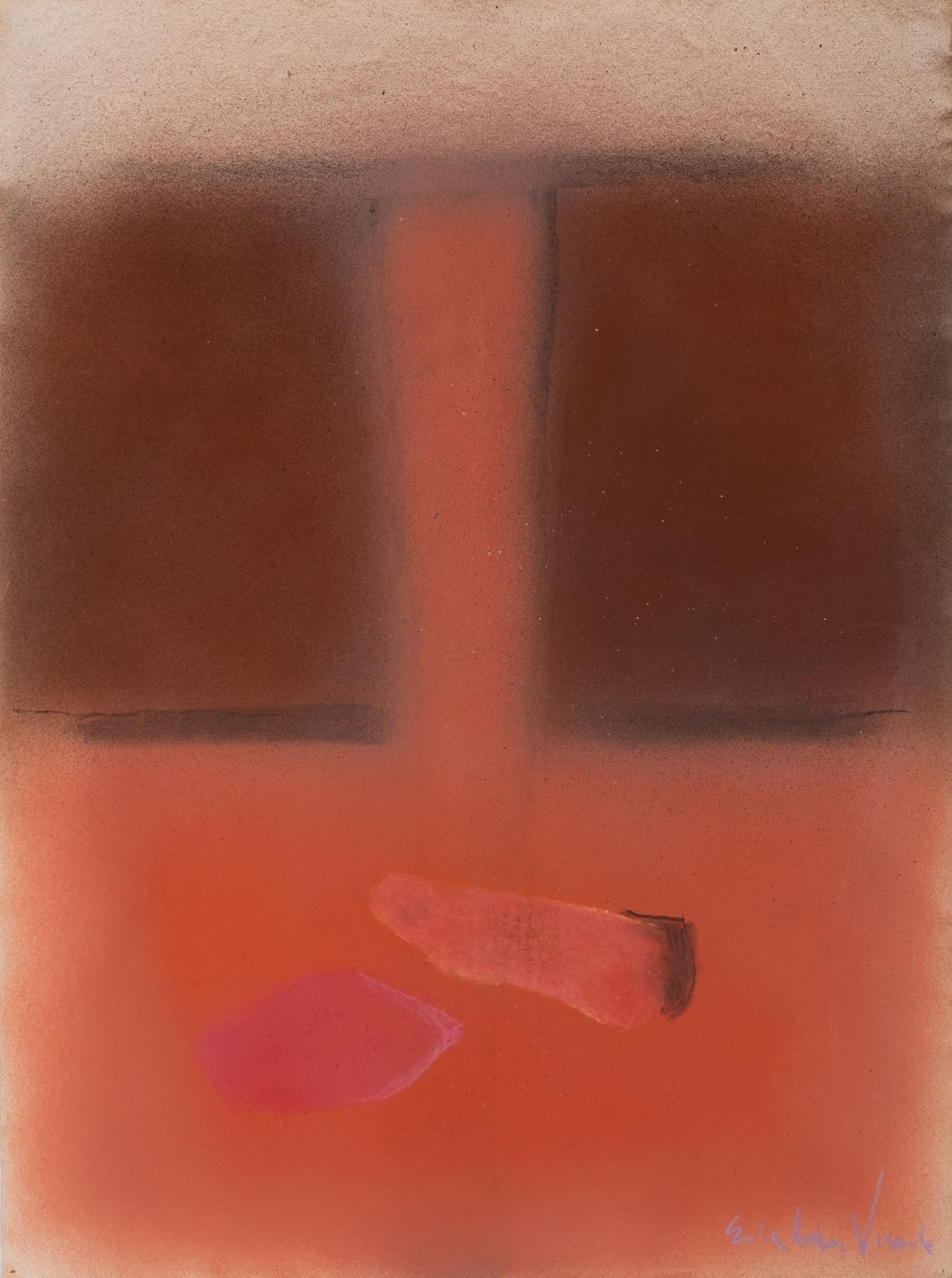




Framed: 39 3/4 x 32 inches
artist
Vicente’s unerring sense of abstract compositions, based on his own unique style, is carefully balanced, and reflects an innate elegance on a bold scale. Absent is any trace of anxiety or aggression. One is reminded of the potential influence from Helen Frankenthaler’s landscapes laid out on stained canvases from the 1950s. Yet Vicente adds his own sense of ease and the serenity of an artist who has given his all over the years and now can slowly and deliberately create stylistically independent and continuously evolving work. Vicente left behind a lifetime body of work that may be seen as part of a sequenced series of canvases that persisted in exploring the effects of light and the subtle differences of applied structure.
In 1936 he fled Spain during the Spanish Civil War and relocated to New York City where he quickly became an integral part of the artist community who were electrifying the Post-War art scene. Sharing a studio with Willem de Kooning, Vicente actively engaged with Franz Kline, Jackson Pollock, Mark Rothko and Barnett Newman, participating in the gatherings at the Cedar Tavern and becoming a member of "The Club," a meeting place for abstract expressionist painters.
Esteban Vicente, Abstract Expressionist and Color Field painter, was an integral part of the inner circle of artists who comprised the electrifying Post War art scene in New York City. Sharing a studio with Willem de Kooning, Vicente could number his friendships with such trailblazing artists as Franz Kline, Jackson Pollock, Mark Rothko and Barnett Newman. A voting member of The Club, Vicente exhibited in 1950 at the Kootz Gallery in New York in their historic exhibition, Talent 1950 and the following year at the then radical avant-garde Ninth Street Art Exhibition as well as at such influential galleries as Leo Castelli, Andre Emmerich, Charles Egan Gallery, and Sidney Janis. In 1991 Vicente received a Gold Medal for Fine Arts from King Juan Carlos I and Queen Sofia of Spain. At the end of his life, a museum was opened in his honor-- the Museo de Arte Contemporáneo Esteban Vicente. Vicente was present for its opening in Segovia by the Spanish government in 1998. He even had a street named after him near his birthplace in Turegano. Vicente lived out his days in Bridgehampton, New York.




